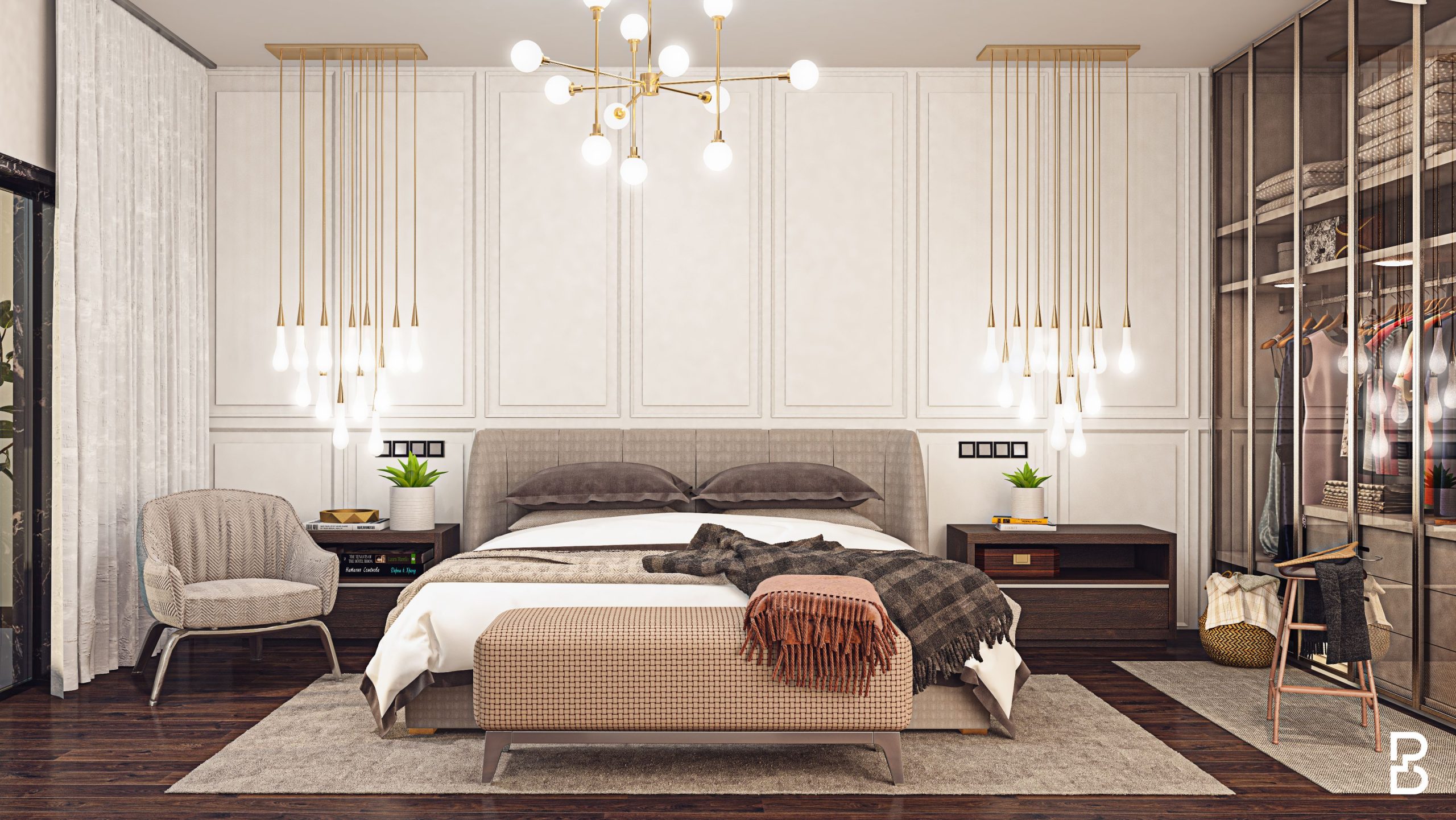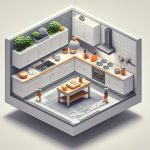Fancy a home that’s both stylish and comfortable? Look no further than Modern European Interior Design, where old-world charm meets new-age vibes. Imagine timeless elegance mixed with sleek lines and modern conveniences. It’s not just about looks; it’s about creating a home that feels warm, inviting, and on-trend. From cozy classics to contemporary masterpieces, there’s a style for every home and every taste. Get ready to step into a world of design that’s both timeless and totally now.
Modern European Interior Design: Where History Meets Chic
Want a home that feels timeless and oh-so-stylish? That’s the magic of modern European interior design! Picture this: sleek, clean lines of today’s world effortlessly blending with the charm and character of classic European style. It’s like taking a trip through time without leaving your living room.
This design approach embraces natural elements like warm woods, authentic stone, and luxurious fabrics – materials that tell a story and age gracefully. The color palette is cozy and inviting, with earthy tones that make you want to curl up with a good book. Intricate touches, like handcrafted accents and carefully chosen antiques, add depth and personality, making your space feel as unique as you are.
One of the most exciting things about European design is its incredible diversity. From the grandeur of a French chateau with its ornate details to the cozy charm of a Scandinavian cabin with its minimalist aesthetic, there’s a style for every taste. Imagine sipping espresso in a sun-drenched Italian villa adorned with colorful tiles or relaxing by a crackling fireplace in a rustic Irish cottage. Each style offers a glimpse into a different facet of European culture and history, making your design choices all the more meaningful.
But here’s the best part: European design isn’t just about looks; it’s about living beautifully. Every detail is thoughtfully considered to create a space that’s both functional and elegant. Imagine a kitchen where preparing meals feels like an art form, a bedroom that’s a serene oasis at the end of a long day, and a living room that’s perfect for both entertaining and cozy nights in.
Here’s a little insider’s guide to get you started:
- Think Green: Europeans are all about sustainability, so using eco-friendly materials and practices is a huge plus. Look for reclaimed wood, natural fibers, and energy-efficient appliances.
- Go Local: Want to add even more character to your space? Explore the regional design styles within Europe. Incorporate Spanish tiles, French fabrics, or Scandinavian furniture for a personal touch.
- History Buff Alert! Understanding the stories behind different European design styles can make your design choices even richer. Imagine incorporating elements from the Art Deco movement or the Bauhaus era – talk about a conversation starter!
- Stay Ahead of the Curve: European designers are constantly pushing boundaries, blending classic elements with cutting-edge materials and technology. Keep an eye out for emerging trends to keep your space feeling fresh and modern.
Modern European interior design isn’t just about creating a beautiful home; it’s about embracing a lifestyle. It’s about surrounding yourself with pieces that tell a story, inspire you, and stand the test of time. So go ahead, infuse your home with the timeless elegance of Europe, and create a space that truly reflects your unique style and worldview.
What Defines Modern European Interior Design?
Modern European interior design is a captivating fusion of traditional European aesthetics and contemporary minimalism. It’s a dance between the classic and the cutting-edge, where history whispers from the walls while the air vibrates with fresh, modern energy.
Imagine sleek, minimalist lines juxtaposed against ornate crown molding, or a vintage chandelier casting a warm glow over modern art. This style is about striking a balance, creating a space that feels both timeless and undeniably current.
Key Elements and Principles:
- Blend of History and Chic: This design philosophy seamlessly blends classic European design elements with modern trends for a look that transcends fleeting fads.
- Functionality is Key: Modern European design is obsessed with making your life easier and your space more functional, all while looking absolutely fabulous. Every detail, from the layout to the furniture, serves a purpose.
- Nature Knows Best: Get ready to see lots of natural materials—wood, stone, and luxurious fabrics—that add warmth and make you feel right at home.
- Neutral with a Twist: Envision serene neutral backdrops (whites, beiges, grays) punctuated by bold pops of color and patterns for a look that’s balanced and visually interesting.
- History in the Making: Modern European design loves to borrow inspiration from historical European styles, seamlessly blending the past with the present.
Defining Characteristics:
- Color Palette: Imagine a serene oasis of soft whites, warm creams, and calming grays. These neutral backdrops allow intricate details—moldings, carvings, and unique architectural elements—to truly shine.
- Furnishings with a Story: Furniture isn’t just for sitting on in this style; it’s about adding character and history. Picture gracefully curved furniture pieces with ornate details, draped in luxurious fabrics reminiscent of European elegance. A touch of vintage, perhaps a mid-century modern chair or a reclaimed wood coffee table, adds another layer of intrigue.
- Textiles that Transport: Sumptuous textures reign supreme in this design style. Rich velvets, soft linens, and intricate tapestries adorn furniture and windows, adding a layer of visual and tactile luxury. Think plush rugs underfoot and throws casually draped over chairs, inviting you to sink in and relax.
- Light as Art: In the world of modern European design, lighting is more than just illumination—it’s an art form. Imagine sparkling crystal chandeliers casting intricate patterns on the ceiling, or sleek, minimalist sconces providing a subtle, sophisticated glow.
- Sustainability at its Core: European design has a deep respect for natural materials and craftsmanship. Expect handcrafted furniture crafted from rich wood, supple leather, and cool, elegant stone. These pieces are built to last, becoming cherished heirlooms passed down through generations.
Modern European interior design is more than just a style; it’s an experience. It’s about surrounding yourself with beauty, history, and comfort, creating a space that feels both timeless and undeniably current.
Exploring the Different Styles of Modern European Interior Design
Modern European interior design is a stylish blend of the old and the new, where sleek lines meet cozy textures, all bathed in natural light. It’s about creating a space that feels both chic and comfortable – a place you actually want to live in! Here’s a glimpse into some of the captivating sub-styles:
- French Country: Imagine strolling through a charming village in the French countryside, peeking into a window to see exposed wooden beams, a beautiful stone fireplace, and furniture that looks like it’s been passed down through generations. Soft fabrics, perhaps with a floral pattern, add a layer of warmth and make you want to curl up with a good book.
- Scandinavian: If you crave a clutter-free environment, Scandinavian design is calling your name! It’s all about simplicity and functionality. Think bright, airy spaces with white walls and light wood accents for a touch of nature. Everything has its place, creating a sense of peace and tranquility.
- Baroque: Ready to add a little drama? Baroque interiors are all about grandeur and opulence. Picture intricate carvings, rich colors that pop, and luxurious fabrics that beg to be touched. Don’t forget the statement pieces—a sparkling chandelier or gilded accents add that extra touch of extravagance.
- Art Nouveau: Nature takes center stage in Art Nouveau design. Imagine flowing lines, stained glass windows that cast colorful light, and organic shapes inspired by flowers and vines. It’s whimsical, artistic, and sure to spark conversation.
- Mediterranean: Mediterranean design transports you to a sun-drenched villa overlooking the sea. Warm colors like terracotta and ochre dominate, while natural stone and wrought iron add rustic elegance. Blue and white accents, perhaps in a mosaic tile pattern, complete the look, creating a space that feels both vibrant and inviting.
Key Takeaways:
- Modern European interior design masterfully blends traditional European style with a modern twist.
- Neutral colors and clean lines create a timeless backdrop that never goes out of style.
- Natural materials, like wood and stone, bring warmth and a sense of authenticity to your space.
- Don’t be afraid to incorporate a touch of history! Antique accents, luxurious fabrics, or ornate details can add character and tell a story.
- With so many captivating European styles to choose from, you’re sure to find the perfect design to match your personality and taste.
For more inspiration, dive deeper into European Interior Design Styles and discover the endless possibilities!
Key Elements and Principles of Modern European Interior Design
Modern European interior design harmoniously blends traditional and contemporary elements, creating spaces that are both timeless and functional. This sophisticated aesthetic embraces a fusion of classic luxurious fabrics and ornamental accents with clean lines and geometric shapes. Imagine a space that feels refined yet inviting, where every detail has been carefully considered to create a sense of balance and harmony.
Embracing the Past, Celebrating the Present:
One of the most captivating aspects of modern European interior design is its ability to draw inspiration from the past while embracing the present. This design philosophy incorporates elements from historical styles such as Renaissance, Baroque, and Art Deco, seamlessly integrating them into contemporary spaces. For example, you might see a classic chandelier with crystal accents paired with a sleek, modern sofa. Or, a traditional fireplace mantle could be updated with a minimalist concrete surround.
Functionality at its Finest:
While aesthetics are paramount, modern European design never sacrifices functionality for style. Spaces are designed to be lived in, with every element carefully considered to enhance the flow and function of the room. Furniture is chosen for both its beauty and its practicality, and storage solutions are cleverly integrated into the design.
Natural Materials, Luxurious Textures:
Natural materials play a key role in modern European interior design, adding warmth, texture, and a sense of timeless elegance. Expect to see rich woods, such as oak, walnut, and cherry, used for flooring, cabinetry, and furniture. Natural stone, such as marble, granite, and limestone, adds a touch of luxury to countertops, backsplashes, and flooring.
Textiles are equally important, with an emphasis on rich textures and luxurious materials. Velvet, silk, linen, and wool are often used for upholstery, drapery, and rugs. These luxurious fabrics add a layer of sophistication and comfort to the space.
A Fusion of Styles and Influences:
Modern European interior design is not a monolithic style but rather a diverse tapestry of influences. Elements from different European countries and cultures are often blended together to create unique and personal spaces. For example, you might see French-inspired furniture paired with Scandinavian-inspired lighting, or Italian-inspired tile work alongside Spanish-inspired textiles.
Uniquely Yours:
Ultimately, the beauty of modern European interior design lies in its ability to be tailored to individual tastes and lifestyles. Whether you prefer a more minimalist or maximalist approach, there are endless possibilities for creating a space that is both stylish and reflective of your personal aesthetic.
Explore Related Design Concepts:
If you’re captivated by the allure of Modern European interior design, you might also be interested in exploring related design concepts:
- Jewelry Store Interior Design: Discover how this style can be adapted to create luxurious and inviting retail spaces.
- Jobs with Interior Plant Design: Explore the growing field of biophilic design and the use of plants in interior spaces.
- Medical Office Interior Design: Learn how this design approach can be used to create calming and welcoming healthcare environments.
These related links provide a deeper dive into specific applications of design principles, broadening your understanding of how aesthetics and functionality intertwine to create captivating spaces.
- White Kitchen With Wood Countertops: A Warm Design - January 7, 2026
- Modern Butcher Block Kitchen: Warmth and Style with White Cabinets - January 6, 2026
- White Cabinets with Butcher Block Countertops: A Kitchen Classic - January 5, 2026










